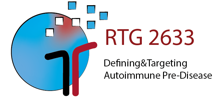Luise Janusch
Optimization and exploitation of a 3D model of human skin for translational use
Bioengineering is concerned, among other things, with the production and utilization of artificial tissues, organs or organ components for basic science, drug discovery and regenerative medicine. Up to now, animal experiments have been considered the gold standard for preclinical testing of substances that are to be used in patients; however, it remains controversial how meaningful these mostly murine results are for mapping human diseases. Human 3D skin models (with epidermis, dermo-epidermal junction and dermis) can make an important contribution to the standardized performance of experiments without directly relying on patient material of living or deceased individuals and corresponding ethical votes. At the Lübeck Institute of Experimental Dermatology (LIED), a standardized protocol for the in vitro generation of human 3D skin has been established, which can be used experimentally for various questions.
The first step is to learn how to perform the patient-independent 3D full-thickness skin model in the laboratory at the LIED and acquire all necessary knowledge. Next is the optimization of the model in terms of culture conditions. Further, the 3D model shall be used for serological diagnosis of autoimmune dermatoses (especially of pemphigus vulgaris and pemphigus foliaceus). Finally, we try to establish the 3D skin as a model for pemphigus vulgaris while injecting the monoclonal antibody PX4-3 into the skin specimens which is directed against desmoglein 1 and 3 and causes split formation in the basal layers of the epidermis.

- People
- Doctoral Candidates
- Merabell Adem
- Katja Adriany
- Farbod Bahreini
- Estelle Bergmann
- Swayanka Biswas
- Jana Buhre
- David De Luca Laredo
- Kaan Ersoy
- Ferdinand Gebauer
- Sen Guo
- Veronika Hartmann
- Michelle Hein
- Luise Janusch
- Maj Jäpel
- Anna Knauer
- Valentin Kneitz
- Maximilian Lahmer
- Wing Yu Lee
- Daniel Mehlberg
- Sahar Mehrabani
- Afsaneh Mehrpouyan
- Sadegh Mousavi
- Milica Novovic
- Justus Ohmes
- Bianca Opelka
- Colin Osterloh
- Cristian Papara
- Tina Rastegar Lari
- Rochi Saurabh
- Alessia Maria Sbaraglia
- Jovan Schanzenbacher
- Mareile Schlotfeldt
- Carolin Schmidt
- Solveig Lea Schmidt
- Leon Schmidt-Jiménez
- Nora Schoell
- Salomini Sinnathurai
- Sarah Stenger
- Chiara Walczyk
- Nele Wellbrock
- Julia Wimmer-Gross
- Natalia Zappe
- Jianrui Zheng
- Luca Zillikens
- Carla Zünkeler
- Principal Investigators
- Associated Scientists
- Administration
- Doctoral Candidates




